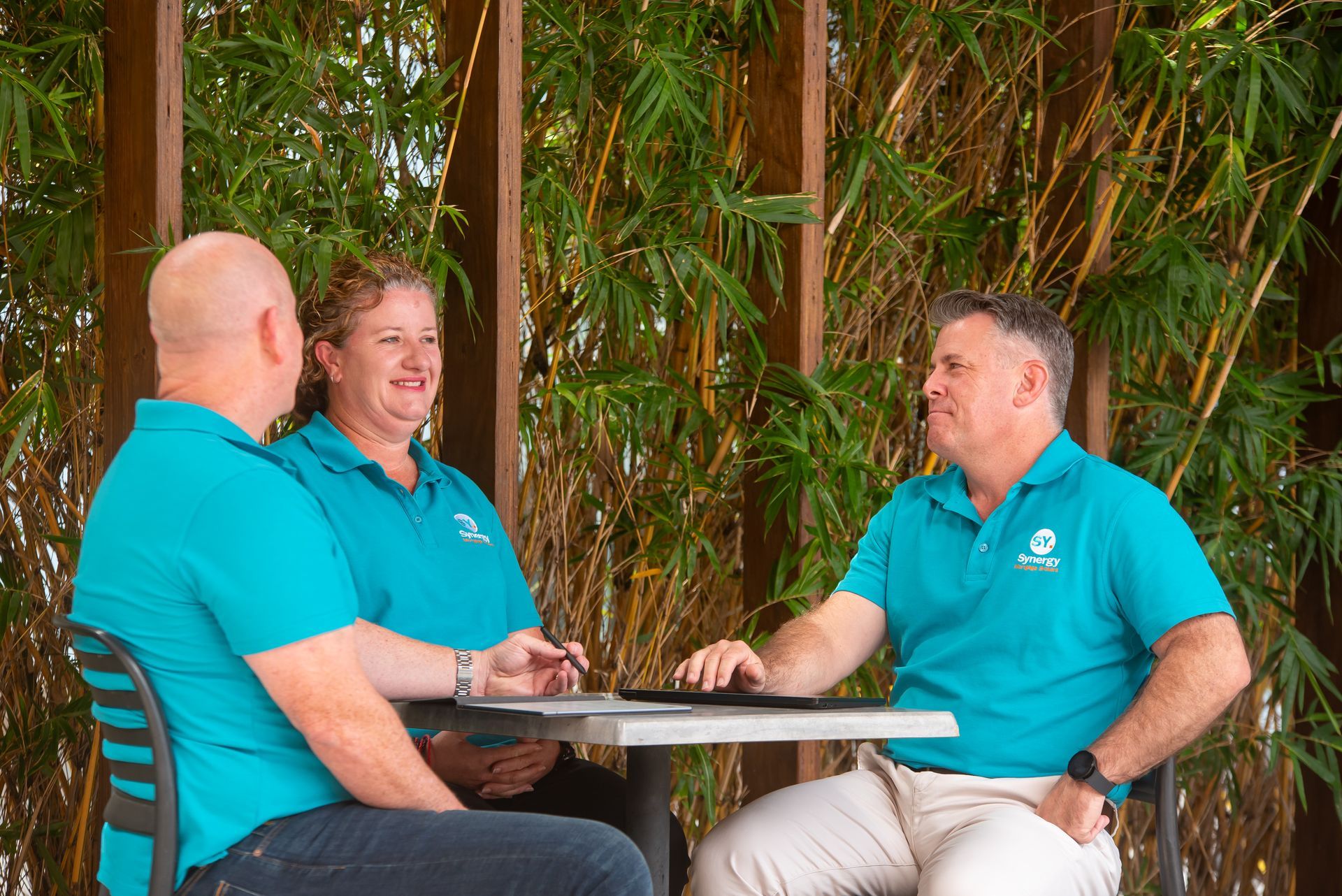What Is a Low Doc Home Loan? Features, Eligibility, & Application
That moment hits every self-employed Aussie eventually. You're ready to buy your dream home, the bank asks for pay slips, and... that's when reality strikes. You've got the income but not the paperwork they're demanding.
Sound familiar? You're not alone. Almost 20% of Australia's workforce operates without those neat little pay stubs traditional lenders love so much. If you're running your own business or working as a contractor, those conventional home loans often feel about as accessible as a beach house on Mars.
But here's the good news – low doc home loans exist specifically for people like you. These clever lending options cut through the red tape without cutting corners on responsible lending.
Let's get straight to the point. A low doc loan is a mortgage that doesn't require the mountain of paperwork traditional loans demand. Instead of tax returns stretching back to what feels like the Stone Age, these loans look at other proof that you're good for the money.
While the deposit requirements (LVRs) are now often similar to prime lending, it’s important to understand the trade-offs: you'll likely face a higher interest rate and sometimes a risk fee. The upside? A much simpler application process with far fewer paperwork hassles, opening doors that might otherwise remain closed.
Here's what you'll typically need instead:
- Your Business Activity Statements (BAS)
- Business bank statements showing consistent income
- A declaration from your accountant backing up your financial position
Most lenders also want to see that you've been in business for at least 6-12 months with a valid ABN, and they'll generally cap your borrowing at around 85% of the property value. Some lenders might go to 80% LVR (requiring a 20% deposit) for low doc, and others might even ask for up to 30% or 40% in niche cases, though this is less common now.
Looking for the full story? We're about to walk you through everything self-employed borrowers need to know about scoring a low doc home loan – from who qualifies to exactly what paperwork you'll need to get your foot in the property door. Our team has helped countless business owners navigate these waters, and we're about to share all the insider knowledge you need.
What Is a Low Doc Home Loan?
Let's strip away the banking jargon and get real about low doc home loans. At their core, these are specialized mortgage products designed for folks who can't produce the usual pile of income paperwork that traditional lenders demand.
How does it differ from standard home loans?
Traditional home loans and low doc options are chalk and cheese when it comes to paperwork requirements. With your garden-variety mortgage, lenders want to see:
- Those neat little pay slips from recent months
- Tax returns stretching back two full years
- Personal bank statements showing every coffee purchase you've made
- Confirmation that yes, you work where you say you do
Low doc loans take a completely different approach. They work on a trust-but-verify system where you'll sign a Borrower's Income Declaration stating what you earn. Instead of those traditional income documents, lenders will look at things like:
- Business Activity Statements (BAS) that show your GST payments
- Business bank statements revealing your actual cash flow
- Your accountant vouches that you're not making it all up
Here's where the trade-offs kick in. While LVRs have become more aligned with prime lending (often up to 80-85% LVR), you'll typically face a higher interest rate compared to a full-doc loan. This premium can range from 0.5% to 2% or more above standard rates, depending on the lender, your LVR, credit history, and business stability.
Additionally, some lenders may charge a risk fee. This is an upfront fee, sometimes added to the loan amount, that acts as a form of insurance for the lender against the perceived higher risk of a low doc application. It’s conceptually similar to Lenders Mortgage Insurance (LMI), which protects the lender if you default, but the risk fee is usually a direct charge from the lender rather than a third-party insurer. Its cost can vary significantly based on the loan amount and LVR.
Many lenders also get picky about where you can buy, restricting certain postcodes for low doc applications due to perceived property market risk.
The qualification goalposts move, too. These loans primarily help people who've been running their show for under two years, or those with income that bounces around like a kangaroo. Worth noting – some lenders will only talk low doc if you're working through a mortgage broker.
Why does it exist for self-employed borrowers?
These loans didn't appear by accident. They emerged because Australia's army of self-employed individuals needed a fair go at property ownership. The fact that roughly 10% of all Aussie mortgages are low doc loans speaks volumes about the demand.
Self-employed borrowers face unique hurdles when chasing traditional home loans. Many run profitable businesses but simply can't produce the paperwork traditional lenders have on their tick-box forms. Why? Several reasons:
- Their income roller-coasters throughout the year
- They use perfectly legal tax strategies that shrink their taxable income
- They might be behind on lodging their tax returns
- Their business shows smaller profits because they're reinvesting in growth
Created for business owners without those tidy fortnightly payment records, these loan products give self-employed Aussies a shot at buying property or refinancing without the usual income proof. This means freelancers, contractors, and small business operators can finally access housing finance that would otherwise remain out of reach.
These loans fill a crucial gap in Australia's mortgage landscape, letting entrepreneurial types achieve the great Australian dream despite having financial paperwork that doesn't fit neatly in conventional boxes.
Who Needs a Low Doc Home Loan?
Ever tried fitting a square peg into a round hole? That's exactly how it feels trying to get a traditional mortgage when you're self-employed. Standard lenders want neat little packages of paperwork that many successful business owners simply don't have on hand.
Our experience working with hundreds of self-employed borrowers shows that low doc loans are perfect for specific groups who've got the income but lack the conventional proof banks usually demand.
Self-employed workers and contractors
Freelancers and contractors make up the biggest chunk of low doc loan applicants – and no wonder. Recent figures show a whopping 42% of all business loan applications come from sole traders. These folks earn good money, but their paperwork situation tells a different story.
Think about it. If you're juggling multiple clients or contracts, your income probably bounces around like a yo-yo. One month you're flush, the next you're scraping by waiting for that big invoice to clear. Traditional loan assessments just can't handle these patterns – they're built for steady PAYG employees, not entrepreneurial types.
Just started your business? Even better reason to look at low doc options. Most standard lenders want to see two years of tax returns, and unless you've got a time machine, that's simply not possible when you've only been operating for 12 months.
Small business owners riding the income rollercoaster
Running your own business means playing the tax game smartly. Many of our small business clients use perfectly legal strategies to minimise their taxable income – great for tax time, not so great when the bank wants to see big paper profits.
To get your foot in the door with a low doc loan, you'll typically need:
- An active ABN (usually registered for at least 6-12 months)
- GST registration
- Some way to show your actual income is consistent
- A decent credit history without serious black marks
Got a seasonal business? Low doc loans are practically made for you. When your income spikes during certain months but crawls along during others, these flexible lending options keep the door open during those inevitable quiet periods.
People with paperwork gaps
Life doesn't always line up neatly with tax deadlines and banking requirements. We've helped plenty of clients who fall into this third category – people whose financial records aren't quite up to date or complete.
You might belong here if you:
- Haven't lodged your latest tax return yet
- Recently jumped from employment to self-employment
- Make the most of your money from investments rather than wages
- Need to move quickly on a property opportunity, but your financials aren't freshly updated
The beauty of low doc loans? They recognise that your ability to repay doesn't magically disappear just because your paperwork isn't perfect. Instead, you'll show your financial position through alternatives like BAS statements, bank records, or a letter from your accountant.
Let's be honest – these loans weren't created because banks suddenly became generous. They exist because smart lenders recognised a huge market of creditworthy borrowers who just don't fit the traditional mould. And thank goodness they did!
Getting Your Low Doc Loan: The Step-by-Step Process
Ready to jump into the low doc loan application process? The journey's surprisingly straightforward – especially when you've got the right guide. With over 70% of home loans now involving mortgage brokers, having an expert in your corner makes all the difference when you're self-employed.
Step 1: Find yourself a broker who gets it
Let's be honest – not all mortgage brokers understand the unique world of self-employed lending. You need someone who's walked this path before with other business owners. A good broker doesn't just know which lenders offer low doc options; they understand which ones will look favourably on your specific situation.
Our experience shows that the right broker makes all the difference. They'll translate your business's financial story into terms lenders understand and champion your application if any hiccups occur down the track. Think of them as your interpreter in the foreign language of lending.
Why a broker is crucial for low doc loans:
Access to Specialist Lenders: Many lenders who offer low doc options don't deal directly with the public, only through brokers.- Navigating Complex Criteria: Each lender has different rules for low doc – varying LVRs, accepted income proofs, and business length requirements. A broker knows these nuances.
- Presenting Your Case: They know how to best present your unique financial situation to a lender to maximise your chances of approval, even with fluctuating income or specific tax strategies.
- Ongoing Support: From settlement application, they're there to answer questions and resolve any issues.
Step 2: Put together your application
Once you've found your broker and settled on a lender, you'll need to complete their application form. This typically covers:
- The usual personal details (yours and any co-applicants)
- Your business information
- What you own and what you owe (assets and liabilities)
- Details about who depends on you financially
- How much you want to borrow and for how long
The form looks similar to standard loan applications, but the difference lies in what happens next.
Step 3: Round up your supporting documents
This is where low doc loans differ from traditional mortgages. Instead of tax returns and pay slips, you'll need to provide alternative proof of income. Your broker will talk you through exactly what your chosen lender wants, but it's typically at least one of:
Recent business bank statements (usually the last 6-12 months)- Your BAS statements from the past year (for GST-registered businesses)
- A letter from your accountant backing up your income claims
You might also need to sign a self-declaration about your income. Just remember – be honest here. These declarations sometimes find their way to the tax office, and nobody needs that headache.
Other important documents to consider:
- Credit History: Lenders will assess your credit report. While a "decent" credit history is preferred, minor issues like a few late bill payments might be overlooked with strong alternative documentation. However, serious black marks like defaults, bankruptcies, or court judgments will significantly reduce your options.
- Proof of Funds: Documentation for your deposit and other upfront costs (e.g., savings account statements, gift declarations).
- Identity Documents: Passport, driver's license, etc.
Step 4: Let the valuation and approval process unfold
After you've handed over your documents, the lender arranges a valuation of the property you're buying. This usually takes anywhere from a few days to a couple of weeks, depending on how complex the property is and how busy the valuers are.
Once the valuation ticks the right boxes, the lender completes their assessment, makes their decision, and – if it's good news – releases the funds when settlement day arrives.
Here's a pro tip: keep in close contact with your broker throughout this final stage. Quick responses to any last-minute questions can make the difference between a smooth approval and unnecessary delays. We've seen small issues become big problems simply because no one addressed them promptly.
The whole process typically moves more quickly than you might expect. Without all those tax returns to scrutinise, lenders often reach decisions faster than with traditional mortgages. That's another hidden benefit of the low doc approach – less paperwork often means less waiting time.
Upfront Costs Beyond Your Deposit
Remember, your deposit is just one part of the financial puzzle when buying a property. You'll also need to budget for:
- Stamp Duty: A significant government tax on property purchases, varying by state and territory.
- Conveyancing/Legal Fees: For the legal work involved in transferring property ownership.
- Building & Pest Inspections: Highly recommended to ensure the property is sound.
- Loan Establishment Fees: Fees charged by the lender for setting up the loan.
- Risk Fee (if applicable): As discussed earlier.
Refinancing with a Low Doc Home Loan
Low doc loans aren't just for first-time buyers or new purchases; they're also a viable option for refinancing an existing home loan. This can be particularly useful if:
- Your self-employed income has changed since you first took out your loan.
- You've previously been on a low doc loan and want to secure a better rate (even if still low doc).
- You want to consolidate debt but your tax returns aren't up-to-date.
The process is very similar to applying for a new low doc purchase loan, focusing on your current business income via BAS statements and bank accounts.
Your Exit Strategy: Graduating to a Prime Loan
One of the great benefits of a low doc loan is that it provides a pathway to property ownership. As your business matures and your financial history becomes more established (e.g., consistently lodging tax returns for two years), you might be able to refinance to a traditional 'prime' home loan. This can lead to:
- Lower Interest Rates: Prime loans generally have the most competitive rates.
- Fewer Fees: You'll likely avoid the risk fees associated with low doc products.
- More Flexibility: Potentially access a wider range of loan features and products.
Think of your low doc loan as a stepping stone. Your broker can advise you on when it's the right time to consider transitioning to a prime loan.
Final Thoughts on Low Doc Home Loans
Low doc loans truly are a game-changer for Australia's self-employed population. As we've explored, these specialised mortgage products address the real-world challenges faced by those without traditional income documentation. They're not just another lending option – they’re often the only viable path to homeownership for entrepreneurial Australians.
Yes, they require alternative documentation like ABN registration, GST details, business bank statements, and an accountant's declaration. And while the application process might look different from standard loans, the four-step journey we’ve outlined—starting with broker consultation—makes it entirely manageable.
Before diving in, assess your eligibility carefully. Most lenders want to see at least 6–12 months of business activity and a solid financial position, even if your credit history isn’t spotless. Be prepared for potentially higher interest rates and sometimes a risk fee, but understand that this trade-off opens doors that would otherwise stay closed.
Here’s the key: success with low doc loans hinges on expert guidance. That’s where
Synergy Mortgage Brokers comes in. With deep knowledge of non-traditional lending, we specialise in helping self-employed Australians secure the financing they need, without the roadblocks.
Ready to turn your business success into property ownership? Contact Synergy Mortgage Brokers today and take the first confident step toward your new home
Subscribe Today!
Stay in the loop - subscribe to our newsletter for the latest trends and insights.
Contact Us Today
We’d love to hear from you. Choose the most convenient method and we’ll get back to you as soon as we can.








